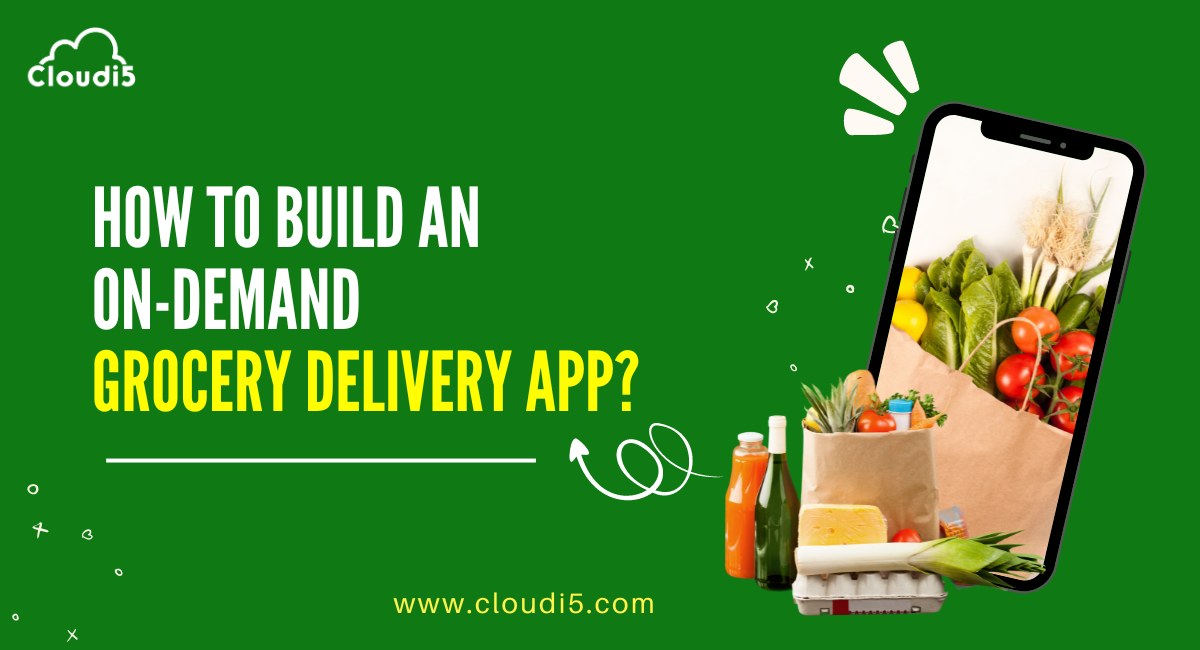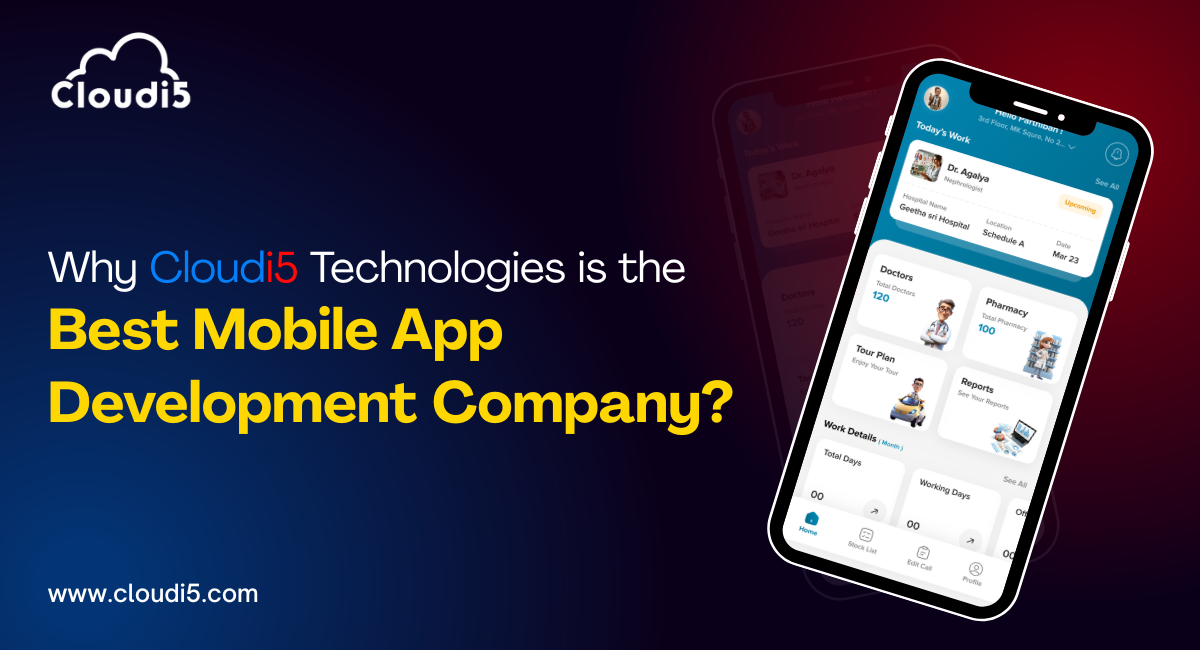
How To Build An On-Demand Grocery Delivery App?
Do you know which app has the magical power to summon snacks and treats to your doorstep at any hour of the day?
The on-demand grocery delivery app, of course! With just a finger tap, it can bring delicious goodies like a culinary wizard, leaving you in awe of its convenience and craving-quenching prowess!
Journey into the magical realm of on-demand grocery delivery apps – where cravings are satisfied with a tap. Discover the guide to grocery app development and learn how to summon your own marvelous app!
Why Should You Build an On-Demand Grocery Delivery App?
E-commerce website development has changed how people shop, and groceries are no exception. With an on-demand grocery delivery app, users can enjoy the convenience of shopping for groceries anytime, anywhere.
Building an on-demand grocery delivery app offers several compelling reasons that make it a lucrative and strategic decision for entrepreneurs and businesses.
In the bustling landscape of modern living, where time is a precious commodity, this app brings forth the allure of convenience and efficiency.
Types of Grocery Applications
Grocery delivery applications come in a variety of types and cater to various requirements and interests. Here are a few typical examples:
- Traditional Grocery Shopping App
Offers an online version of a physical grocery store with a comprehensive product catalog and various delivery options.
- On-Demand Grocery Delivery App
Enables users to order groceries and have them delivered to their doorstep within a short timeframe, offering convenience and speed.
- Grocery Aggregator App
Aggregates products and prices from multiple grocery stores, providing users with a single platform to compare and choose the best deals.
Essential Features of On-Demand Grocery Application
Here are the five essential features for on-demand grocery app development:
- Grocery Catalog
- Shopping Cart
- Multiple Payment Options
- Real-Time Order Tracking
- Secure Checkout
By including these essential features in your on-demand grocery app, you can enhance the user experience, promote customer loyalty, and differentiate your app in the competitive market.
Roadmap to Building Your On-Demand Grocery Delivery App
Building an on-demand grocery delivery app involves several steps and considerations.
Here are the tips for building an on-demand grocery application:
Step 1: Define Your Vision
Before diving into Grocery mobile app development, define your vision and goals. Understand the purpose of your on-demand grocery delivery app, the target audience it will serve, and the unique value it brings to the market. Conduct thorough market research to identify opportunities and potential challenges. A clear vision will guide you through the development process and ensure your app meets the needs of your users.
Step 2: Sketch Your User Experience (UX)
The user experience is paramount to the success of your app. Create wireframes and user flow diagrams to visualize the app's layout and navigation. Consider the user journey from registration to placing an order and receiving the delivery. Optimize the app's usability, ensuring that users can easily browse products, add items to the cart, and complete the checkout process seamlessly.
Step 3: Choose the Right Tech Stack
Choosing the appropriate technology stack is crucial for creating a reliable and scalable app. Decide whether you'll develop native apps for iOS and Android or opt for cross-platform development using frameworks like React Native or Flutter. Choose backend technologies that support real-time updates, handle large volumes of data, and ensure the app's smooth functionality.
Flutter is a great choice for developing a grocery app because it supports cross-platform development for both Android and iOS. Its native-like performance, real-time updates, and scalability, when combined with the right backend technologies, make it a robust and efficient option.
With Flutter, you can deliver a seamless and engaging grocery app experience to a wider audience while ensuring efficient handling of large volumes of data and real-time updates.
Step 4: Build the User-Friendly App
With your vision and UX in mind, begin the development process. Implement the core features of the app, including user registration, product catalog, shopping cart, payment gateway integration, real-time order tracking, and customer support. Create an interface that is simple to use and enriches the entire buying experience.
Step 5: Test Thoroughly
Thorough testing is crucial to identify and fix any bugs or issues before launch. Conduct functional, usability, performance, and security testing to ensure the app operates smoothly across different devices and operating systems. Pay attention to data security to protect user information and build trust.
Step 6: Launch and Marketing
Once your app passes testing, it's time to launch it on app stores. Create compelling app descriptions, screenshots, and promotional materials to attract potential users. Implement an effective marketing strategy, leveraging social media, influencers, and partnerships to promote your app.
The journey continues with continuous monitoring, user feedback, and growth opportunities through marketing, social media engagement, and influencer collaboration. This stage marks an ongoing commitment to deliver value to users and thrive in the competitive market.
Challenges in Building a Grocery Shopping Application
Building a grocery shopping app comes with its share of challenges:
- Real-Time Inventory Management
- Complex Delivery Logistics
- User Trust and Safety
- Competition and Market Differentiation
- User Experience Design
Careful planning, strong growth skills, and ongoing monitoring and improvements are required to overcome these challenges. A successful and user-focused grocery shopping app may be created with the help of a skilled and experienced development team.
How Grocery Delivery Apps Generate Profit?
The on-demand grocery delivery market is growing rapidly, driven by consumer demand for convenience. Grocery delivery applications employ several revenue models:
- Delivery Fees
- The markup on Product Prices
- Subscription Model
- Commission from Partner Stores
- Sponsored Listings and Advertising
There are some tips and tricks to reduce app costs, like lean development methodology, prioritizing features, reusable code components, cross-platform development, and cloud services.
Conclusion
Building an on-demand grocery delivery app brings up a world of opportunities, from embracing technology advancements and satisfying consumers with ease to doing so. So, let technology and imagination guide you on this fascinating app development trip.
Trusted By












Leave Comments